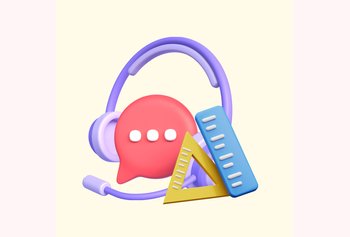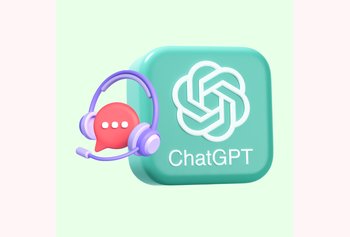Your body sends 11 million bits of data per second to your brain.
Of which it can only process 50 bits per second.
Sometimes it can be so overwhelming that our brains inevitably depend on heuristics (also called cognitive biases or to put it simply, mental shortcuts) to decide faster.
But just because you’re able to reach an outcome “easily”, that doesn’t necessarily mean it’s true.
A classic example of this would be feeling like your life is at a standstill when compared to those celebrating their weddings and promotions on social media.
But that’s just your brain being vulnerable to a disproportionate influence of perceptions.
If you post a picture of being on a yacht, people would assume you’re rich and successful. It could be that you simply rented it or borrowed one from a friend for a few hours. But people seeing your post don’t know that, do they?
Does all of this mean your customers reach out to you with an unconscious bias? In most cases, yes.
- If your customer support team treated them well on the last call, they’ll come to you with a positive bias. Inevitably, the reverse holds true as well.
- If they hear a friend complaining about your service, they’ll be hesitant to approach you.
- If they saw your company as a brand sponsor at the Super Bowl, that’s another positive bias.
- If they saw a slew of negative reviews on third-party sites about your support team, they’d be cautious.
In this post, we’re going to explore the different types of biases and how they come into play with customer service.
Table of Contents
- Bandwagon Effect a.k.a Herd Behaviour
- Availability Cascade
- Sunk Cost Fallacy
- Reciprocity Bias
- Recency Bias
- Status Quo bias
- How to create a positive bias?
Bandwagon Effect a.k.a Herd Behaviour
“Everybody’s saying we should try out this restaurant, you won’t get reservations for days, let’s book one now!”
“He’s a great therapist, my neighbor said so and I heard he even takes on celebrities!”
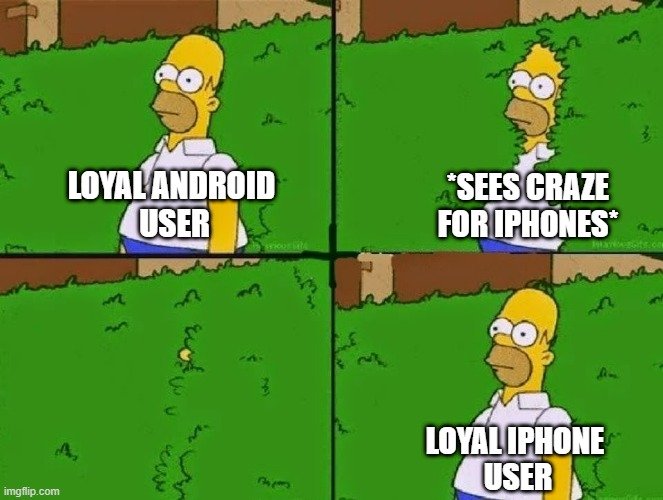
The Bandwagon heuristic makes us believe something just because other people believe in it. Oftentimes, the majority opinion is subconsciously seen to be on the “winning” side and we, as humans, instinctively support popular beliefs.
How does this come into play with your customer experience?
It’s normal for prospective customers to compare your products and services with that of your competitors. The Bandwagon Heuristic bias seeps into your customers’ minds when they see reviews of your service/product, posted online or through familiar sources. So when they do reach out to you asking about your services, they bring their biases along based on what they’ve read or heard about you.
Let’s say you introduced a new feature on your mobile app and the update’s made it slower and less responsive. Your existing customers might start enquiring about it by tagging your brand on public forums.
If you don’t address these queries on time (and also fix the update),it wouldn’t portray your brand in good light. Prospective customers might get cold feet and be swayed by the poor ratings and rumblings about delayed customer service.
Active listening, responsiveness, and empathy from your customer service team can help ease their concerns, and ensure the word-of-mouth around your company is mostly positive.
Availability Cascade
The difference between the Bandwagon and Availability Cascade theories is that the individual bases her love or hate for your product/service on the collective majority driving the “bandwagon” in the former.
She will assume that because others don’t like it, she won’t either.
In Availability Cascade, the individual has either tried your product/service or has reliable, logical information about it, but she will eventually concur with the dominant perceptions, even if these differ from hers.

It could be as simple as sleeping early.
No matter how many times your friends and family would urge you to get your 8 hours of sleep, in all likelihood, you’d be up until the wee hours of the morning binge-watching on a series or working on a project or gaming or be out attending after-parties if you’re a social butterfly.
Now, what’s interesting is that you don’t really think much of it until an influencer you follow, makes a video about the benefits of getting an 8-hour sleep and its visible impact on productivity or if a celebrity confesses that her under-eye dark circles dramatically reduced after she started sleeping in early. Suddenly you’ve become the ambassador of sleeping on time.
How does this come into play with your customer experience?
Influencers have social clout within specific networks. This could be on Youtube, LinkedIn, Instagram, or other social media platforms. And it is quite likely that your customers are a part of their community. Perhaps your customers even trust and value their opinion.
You might see influencers as professional reviewers but your customers see them as passionate consumers. Imagine having a market audience that will willingly hear an influencer talk about your product/service instead of having to chase them.
This is your cue to identify such influencers in your space who align with your and your customers’ goals and values, and see how you can collaborate with them. Apart from finding and connecting with them on social media, you could also use a people finder tool to generally gather more information about potential influencers, including contact information. This might further help you personalize various campaigns
Positive validation coming from an influencer helps customers reinforce their loyalty to your brand and might even cascade into word-of-mouth marketing.
Imagine if you read that a restaurant you regularly visit was endorsed by a famous Michelin-star chef. In all likelihood, you’d be prompted to text your friends and family a link to the article and tell them- “See? I told you that place was good, will you at least try their famous ‘calf brains on toast’ now?”
Sunk Cost Fallacy
We’ve all experienced this fallacy at some point. It’s about continuing to stay on a detrimental course of action only because it’s too late to back down, given the amount of time, money, and other resources you’ve spent on it.
For example, you booked tickets to a movie that you’ve been looking forward to for a very long time. Turns out you got in on the premiere show and so the tickets are expensive. But it turns out, the movie’s awful and you wish you’d waited for the reviews. You’re already 45 minutes in and it’s too late to back out now. You just want to get it over with and move on.
There’s a chance you’ll try to convince yourself that the movie isn’t that bad and the exorbitant money you spent on watching it, was worth it. That is the fallacy of sunk cost.
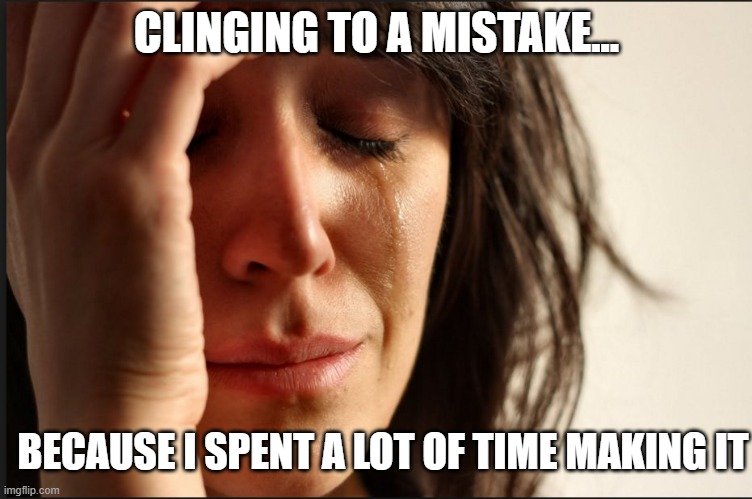
How does this come into play with your customer experience?
A customer, let’s call her Judy, invested a lot of money in buying user licenses for an accounting software. She and her team have gone through hours of training as part of the onboarding. They have eventually gotten used to how the product works but aren’t happy.
There are frequent glitches that interrupt her team’s routine day-to-day work and cause additional piling up of work. It’s getting difficult to keep up. She’s frustrated and she’s constantly reaching out to your support team for help. She’s considered switching to other alternatives but at the same time, she’s invested a ton of money, time, and effort to make this software work for her team.
Judy is experiencing the sunk cost fallacy.
Now, if you’re part of the customer support team, what do you do?
- You and your team empathize with Judy and try your best to fix their issues.
- That said, sometimes, this might not be possible and it just doesn’t work out. In this case, figure out if it’s possible to give Judy a refund so that the pressure is off her shoulders and she can look for an alternative.
These situations happen. Perhaps your product might not be able to meet the requirements of every potential customer out there (understandably, you’d be able to figure this out only later). So when you realize it’s not working, you can either try to fix it or find an amicable agreement to part ways.
Reciprocity Bias
Have you been in a conversation where someone compliments, let’s say, your watch and you felt like reciprocating the gesture by noticing that they had, for example, a cool hat?
Were you going to notice their hat, had they not given you a compliment in the first place? Perhaps not, you just wanted to be nice. But human beings, more often than not, like to mirror a person’s act of kindness or rudeness.
When you help someone or make them feel good about themselves, they’re more likely to return the favor. That is reciprocity bias.
How does this come into play with your customer experience?
This bias kicks in when customers are asked to give feedback. Their scores and opinions would be a direct reflection of how you treat them. If you’ve resolved their queries efficiently, you can expect them to praise you. But if you haven’t met their expectations, there’s a very good chance that they give you a low score.
Recency Bias
You would be going all-in with your efforts to deliver a great customer experience but your customers could pick up on minor errors and tend to remember those particular bits and even exaggerate it the next time they meet you.
Recency bias gives greater importance to the events that have taken place recently in history. If you’re given 10 objects to remember, you’re more likely to remember the ones that were mentioned in the end.
How does this come into play with your customer experience?
It’s a memory bias and entirely depends on your customer’s last interaction with your agent.
If for some reason, your agent took a long time to respond, the customer will more likely remember the long wait time regardless of the positive experiences she would have had with you in the past.
Recency bias also gives you an opportunity to turn situations around for your customers.
If a customer says something along the lines of – “the last time around, your team always transferred my call to several agents and none of you called back to solve my issue” – this is your opportunity to create a positive experience for her.
Give her prompt resolutions or if it calls for multiple teams to be involved, proactively be her main point of contact she can always reach out to until her issue is resolved. It will help convert her trepidations to a positive recency bias.
Status Quo bias
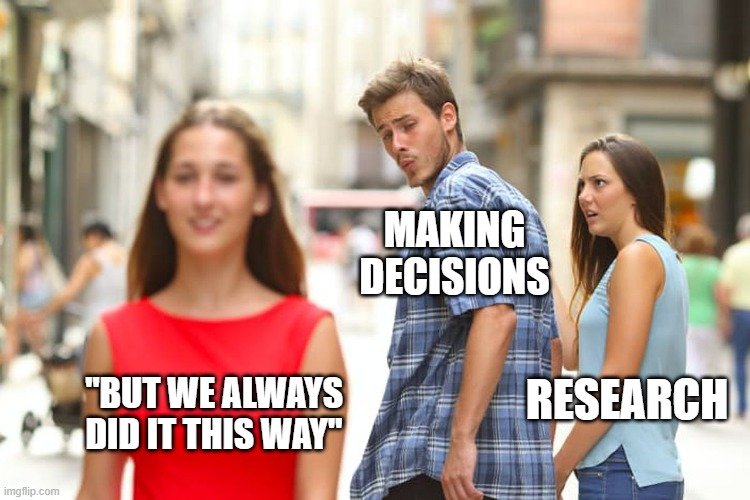
Isn’t it annoying when your go-to restaurant is not delivering and you’re forced to figure out dinner from other places you’ve never been to before? Or when you have to choose a new shaving cream because your current brand has been discontinued?
The status quo bias suggests that people prefer to stay in their current situation than be bothered to try out new alternatives.
Think about it: Many of us have frowned a bit when our go-to food delivery app or social media platforms changed their UI overnight. What we would give to have the “switch to the old/classic version” option?!
How does this come into play with your customer experience?
A classic example attesting to this bias is your company rolling out a new feature that is interfering with your customer’s routine way of using your service or product.
If it’s a fundamental change to the platform, you’re opening the floodgates of customer queries at this point. Your team needs a sturdy plan of action in this situation.
Create an FAQ page that gives detailed insight on ‘how to’ use this feature. Communicate proactively with your customers – via email, preferably – about the update. You can also invite customers to join live product demos where they can see for themselves how the new feature works.
How to create a positive bias?
Wikipedia has listed over 200 such heuristics and there are hundreds of books on consumer behavior (you could start with Dan Ariely’s Predictably Irrational) that can give you great insights on how to craft better customer experiences.
Studying your customer’s behavior, empathizing with her situation, and consistently delivering great customer service is the only way you can get her to stay long-term and invest more in your product.















